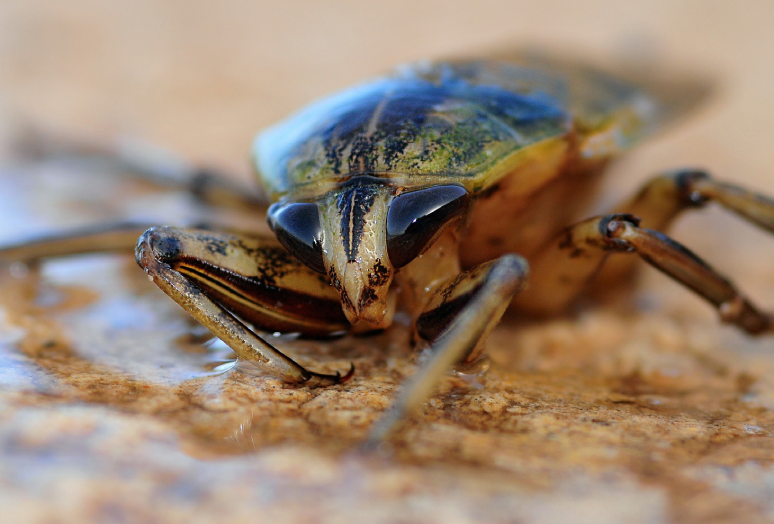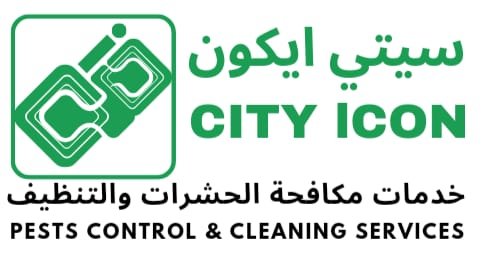
Cockroaches Control
Cockroaches are one of the most important pests within schools , homes , Government sectored , Parks , and restaurants , labor Camps …. ets . They consume human foods and contaminate them with saliva and excrement . They produce secretions that impart a characteristic fetid odor , and their shed skin contains allergens that can cause allergic reactions such as asthma and other bronchial problems in people inhabiting or visiting infested buildings .
Characteristics
Generally two pairs of wings , although these may be reduced or even absent ; forewings have well developed veins and tend to be hardened , they overlap down the mid – dorsal line ; membranous hind wings are folded below forewings ; long whip – like , many – segmented antennae ; omnivorous , with mouth parts adapted for biting ; tarsi , 5 – segmented ; incomplete metamorphosis , with egg and nymph stages

These are two main Species ( characteristics ) in UAE :
German Cockroach ( Blattella germanica ) .
Adult , 10-15mm long ; color , yellowish – brown with two longitudinal dark marks on pronotum ; wings well developed in both sexes ; can readily climb rough and polished vertical surfaces .

American Cockroach ( Periplaneta americana )
Adult , 28-44mm long ; colour , red – brown with yellow border around pronotum ; no yellow sub marginal stripes on forewings ; last segment of cerci , twice as long as wide .
Areas where found & Local Habitat .
Cockroaches are common in commercial premises associated with the production or handling of food . Also in public buildings , domestic premises e.g apartment blocks , and Labor Camp .
Gregarious and nocturnal , they spend the day hiding in cracks and crevices around such areas as sinks , drains , cookers , the backs of cupboards and in refrigerator motor compartments . They especially favor buildings with service ducts and complex plumbing installations . Infestations may be introduced as egg cases or adults in incoming laundry , on raw materials , in crates and packaging , or arise as the insects enter buildings via such routes as drains or refuse chutes .
They are occasionally found together , but B. Germanica generally prefers warmer , humid environments , e.g. centrally heated buildings , whilst . P. Americana are tropical and sub – tropical species but are also found in ports and shipping areas in temperate climates .
Sewerage Lines– American cockroaches live in warm , dark , wet places , because they need to be near water . They are often found in sewers and basements , around pipes and drains
Hotels , Restaurants , Home . Cockroach problems are commonly found in restaurants . The massive amount of food , the never ending ordeal of keeping everything clean and abundant space for insects to hide and thrive makes it a wonder every restaurant doesn’t have an active cockroach population .
Kitchens The biggest pest problem in a kitchen is a cockroach infestation . Many people mistakenly believe that only ” dirty ” kitchens get cockroaches , but this is a myth . Every home or commercial kitchen has the potential to have a cockroach problem .
Labour Camp .
How to Prevent Cockroaches in your Residential .
A high standard of hygiene is important in the control of cockroaches . Sealing entry points can help prevent cockroaches from entering the home . Key risks are gaps around pipes , drains and common walls with neighbouring properties when dealing with American cockroaches . German cockroaches tend to favour kitchens and can be prevented by keeping crumbs and other particles of food from accumulating in and around counters and cabinets .
AS with many pests, the most effective way to control cockroaches is to keep food and water out of reach:
- Store food in containers or in sealed plastic bags.
- Clean all garbage and spills immediately.
- Clean food debris from under refrigerators or ovens.
- Clean used dishes immediately after meals.
- Remove pet food, water and litter trays overnight.
Keep garbage in sealed bins. - Do not leave liquids in sinks or buckets overnight.
Detection and Monitoring.
Efforts to manage cockroaches should begin with a thorough visual inspection and a continuous monitoring program. Once cockroaches have located a suitable harborage, they tend to concentrate in that site, which they leave only periodically to forage for food and water.
Thus, the first step in any inspection is to locate potential cockroach harborage sites. This effort should be followed by monitoring of the area to locate specific cockroach infestations. This monitoring must continue after treatment to determine whether management efforts have satisfactorily reduced the cockroach population.
The typical signs of a cockroach problem are:
Seeing live insects– cockroaches are nocturnal and hide during the day. You will most likely see them when turning on the light in the kitchen at night.
Dead insects.
Egg cases and cast skins-cockroaches shed their skin 5-8 times as they mature.
Droppings – cockroaches leave a dust of black droppings less than 1mm wide and of varying lengths.
Odor- established cockroach infestations produce an unpleasant, musty smell.
Damage – cockroaches will attack organic goods including leather and books.
Sample IPM( Integrated Pest Management ) Program for a Cockroach Infestation in a Home.
1. Use sticky traps to locate cockroach habitat (With Bait or Pheromones Tablets).
2. Lower the cockroach populations by vacuuming areas where traps indicate cockroaches are residing. Steam-clean infested kitchen equipment and appliances to remove grease if possible.
3. Initiate an education program for students, staff, custodians, and building maintenance personnel to gain cooperation.
4. Inspect all incoming items for cockroaches and their eggs.
5. Improve sanitation and waste management procedures to reduce cockroach food sources.
6. Reduce cockroach access to water and habitat by repairing water leaks, caulking cracks, and scheduling other building repairs.
7. If the previous activities have failed to reduce cockroach numbers, apply insecticidal dusts, baits, or gels in cracks and crevices in hard-to-clean areas.
8. Monitor weekly and fine-tune management methods as needed until the problems has been solved. Continue monitoring monthly or quarterly to ensure that sanitation measures are maintained and to detect any incipient buildup of cockroach numbers.
Cockroach Control Methods
Physical Controls.
- Mechanical Barriers. The roaches can travel up the outside of a building and enter through an open window, weep hole, or ventilation duct. Screening these openings will prevent them from using these entry points. The males are also attracted to lights at night. However, roaches are not generally a problem since they need high humidity to survive and usually die within buildings. Screens can also be placed behind grill covers, and over vents and floor drains to prevent cockroach entry.
- Vacuuming. A strong vacuum can be used to pick up live cockroaches, as well as their egg cases and droppings. A vacuum will greatly reduce the amount of cockroach debris that becomes airborne during cleaning. Airborne cockroach debris (fecal material, body parts, and cast skins) can cause allergic reactions in sensitive people. If the cockroach population is large, vacuuming is a way of quickly reducing the population. Once a large portion of the population has been eliminated, it is much easier to affect the remaining cockroaches with other treatment measures.
- Trapping (Sticky pheromones Trap). This is not a good option due to cockroach allergens. Although traps will often capture a number of cockroaches, in most situations trapping alone will not produce a sufficient degree of control.
Chemical Controls.
If nonchemical methods alone cannot solve the problem, integrating a pesticide into your management program may be warranted. Pesticides must be used in accordance with Our Ministry approved label directions. Applicators should always wear protective gear during applications.
When insecticides are needed, they should be applied as crack and crevice treatments or in a bait formulation. Crack and crevice treatment is the application of small amounts of chemical directly into cracks and crevices where insects hide or enter. This type of treatment is particularly effective
against German cockroaches, which spend over 90 percent of their day hidden away in dark cracks, crevices, and voids. Broadcast spraying of insecticides greatly increases exposure risk and can lead to cockroach resistance when the pesticide’s residual activity begins to decline and cockroaches are exposed to sub lethal doses. This type of general treatment should be avoided whenever possible.
If a broadcast spray is necessary, does it when family won’t be present for a few days (Integrated Pest Management: IPM).Do not uses spray formulation insecticides around furniture, Plastic bait stations can be placed in and around computer equipment if cockroaches establish a harborage inside.
- Management Strategies.
The most recent technological advances in cockroach management have been in bait formulations and insect growth regulators (GRs). Other currently used products include desiccating dusts. Each of these treatment methods are discussed in detail below, including how they can be incorporated into a complete integrated cockroach management program. - Cockroach Baits.
Cockroach baits consist of a toxicant mixed with a food source. Current indoor bait formulations are applied as bait stations, gels, dusts or pastes. The bait station is one of the more popular application methods for educational facilities because the stations are easy to place and have residual (long-term) activity. Gel and dust bait formulations are also packaged for injection into racks and crevices that are not readily accessible. Until recently, paste baits were very messy and required application with a putty knife. However, manufacturers have improved these products by
repackaging the bait material into plastic syringes that are suitable for bait gun application. This greatly improves bait placement allowing paste baits to be applied into cockroach harborages as easily as gel and dust formulations. Currently almost all baiting products available for indoor use are formulated using one of the following active ingredients., Fipronil, Imidacloprid, Hydramethylnon, or any formulation approved by MOEW/DUBAI MUNCIPALITY. Some of these are in inject able gel formulations or bait station delivery systems. Other formulations include inject able gels in a syringe or bait gun, as well as bait stations, gel, and flowable bait dusts that can be injected into cracks and crevices.
